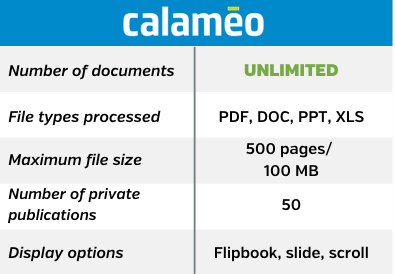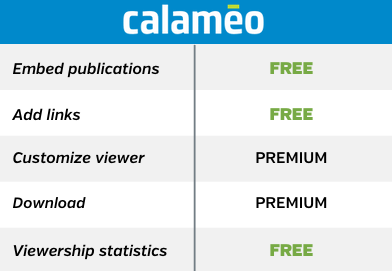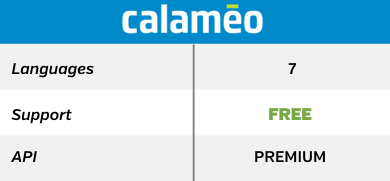What comes to mind when you hear the name Gutenberg? If you work on a website, you might think about the blogging platform WordPress and its Gutenberg content editor. If you’re a fan of e-books, you might think of the Project Gutenberg library of free titles. And if you’re a fan of the Police Academy movies, you might think of Steve Guttenberg.
But only one Gutenberg was the original tech mogul who disrupted the publishing industry. In 1439, this German inventor developed a kind of press that made it possible to print text in multiple copies. Of course, like many tech icons, Gutenberg was actually the second person to invent his device. Although it wasn’t widely adopted at the time, Bi Sheng created moveable type 400 years earlier in China.
It may seem funny to talk about books like a technology, the same way we talk about smartphones and apps. Despite their low-tech material of paper and ink, books are technology: an object invented to store information. That’s why we’re taking a look at how innovation has shaped the history of publishing, from ancient eras right up to today.
Handmade books
Before Bi Sheng and Gutenberg’s printing inventions, every single book around the world was made by hand. These manuscripts, or hand-written texts, came in two main formats. Scrolls had writing on a single, rolled-up surface. On the other hand, a codex would look much more like a modern book. They had multiple pages inside a pair of wooden boards. But compared to printed books, very few manuscripts existed.
In large part, handmade books were rare because of the time, effort and resources required to create them. Not only did you need someone who knew how to write—not easy to find thousands of years ago—you’d also need something to write on and with. Some common materials included clay and wax tablets, papyrus paper and parchment. Besides quill and ink, styluses and calames were also used to write. And once you gathered the materials and found a scribe, it could take years to copy out a text.
Because books and writing were advanced technologies most people never encountered in the handmade era, cultural information was stored in other ways. For example, the art and decoration on buildings like churches told visual stories to their viewers. Music, folktales and good old memorization were also important forms for sharing knowledge. However, the arrival of the printing press was about to revolutionize books.
Publishing revolutions
Printing wasn’t special to the printing press, but the concept of moveable type was. For centuries, artists knew to carve a flat image onto a block of wood, cover it with ink and press it against a paper page to make a print. Gutenberg and Bi Sheng’s innovation was to produce images of individual letters, or characters. Then, these letters were arranged into the text of a page and set into a frame for printing.
Although it might not sound like much, this moveable type technology meant that printing a page took minutes instead of weeks. Printing a book of 100 pages took weeks, not years. Plus, making copies was simple. As a result, more and more books entered circulation. Books held more information and, in Europe, more people read them throughout the Renaissance and Enlightenment. Publishers began to print and sell books on a bigger scale than ever.
One reason why the audience for books exploded? Education expanded dramatically in many places across the world. A growing number of people could read and they bought books. History, science, fiction, philosophy, dictionaries, travel guides—publishers offered books in every genre as printing technology advanced. Presses improved, paper became cheaper and by the end of the 20th century, the business of making and selling books had spread into a global industry worth billions of dollars.
Digital experiments
But the story of publishing innovation doesn’t end there. The invention of computers and the Internet created new tools for writing. From the clay tablets and calames to desktops and digital formats, another huge technological shift has been changing publishing over the past several decades. Unlike printing, however, digital publishing has taken lots of different directions as audiences try new experiences.
For example, publishing books on CD-ROM was a major trend in the 1990s. As old-fashioned as that sounds today, CD-ROM publishing let users access a large amount of information easily. In fact, an early digital encyclopedia set was priced 86% cheaper than the equivalent 21 volumes of printed books. And the format could include multimedia audio, video and links.
While CD-ROMs were replacing traditional encyclopedias, more experiments were happening online. Twitter launched in 2006 and by 2008, people were using it to write novels 140 characters at a time. The Kindle launched in 2007 and by 2010, e-books made up an important part of sales. New channels, formats and ideas are still developing and evolving online very quickly. After all, who needs a CD-ROM reference publication when you have Wikipedia?
To be continued
In short, the book is a technology that has been renewed to meet the needs of readers for hundreds and thousands of years. As publishers face digital challenges in the 21st century, there’s plenty of reasons to be optimistic about the future. Handmade, machine-printed or digital: books are always adapting so that more people can access them—and the knowledge inside.
Read this article in our 7th issue of Calaméo Magazine, as well as many others on the theme of renewal and innovation:
And if you haven’t read all the other issues of Calaméo Magazine yet, you can find them right here.







